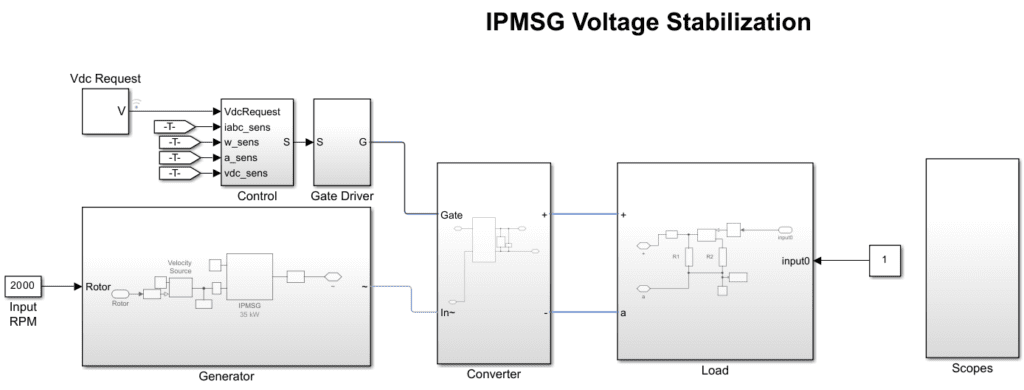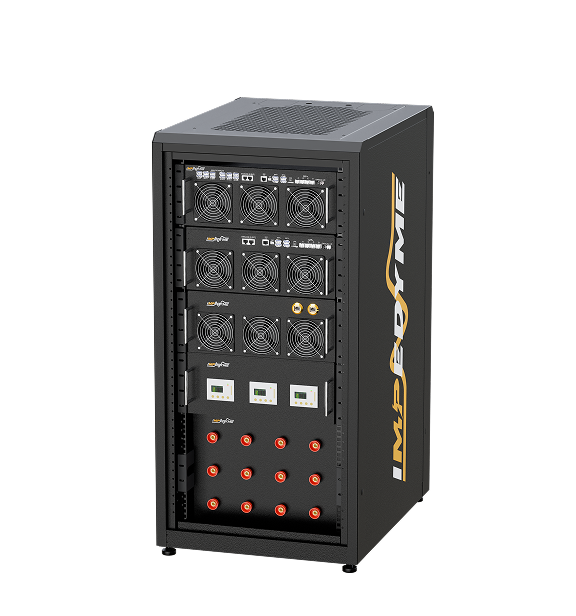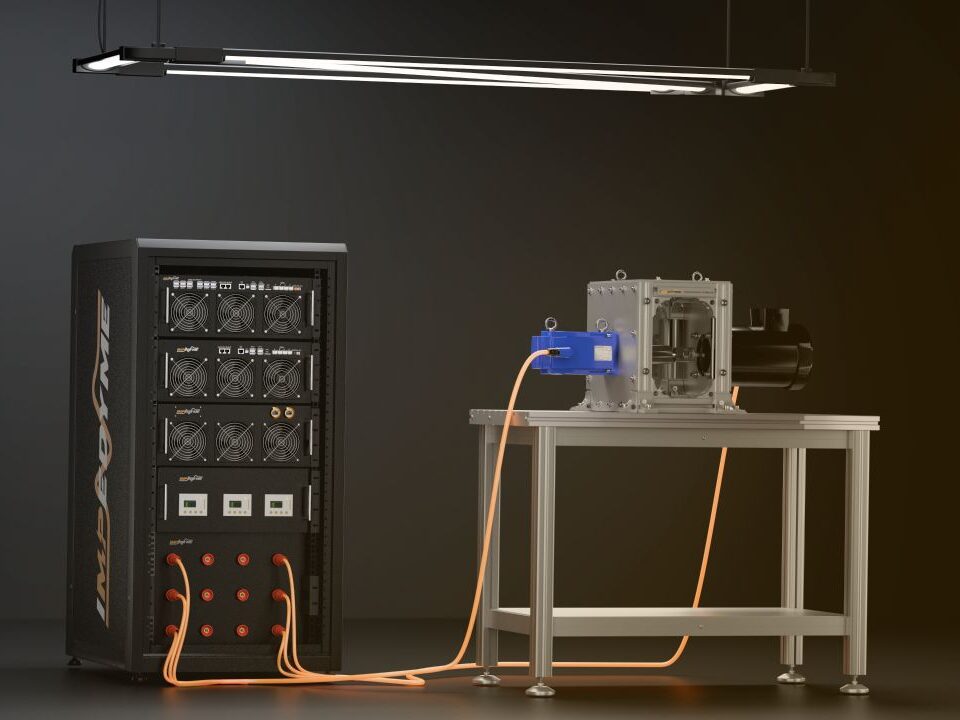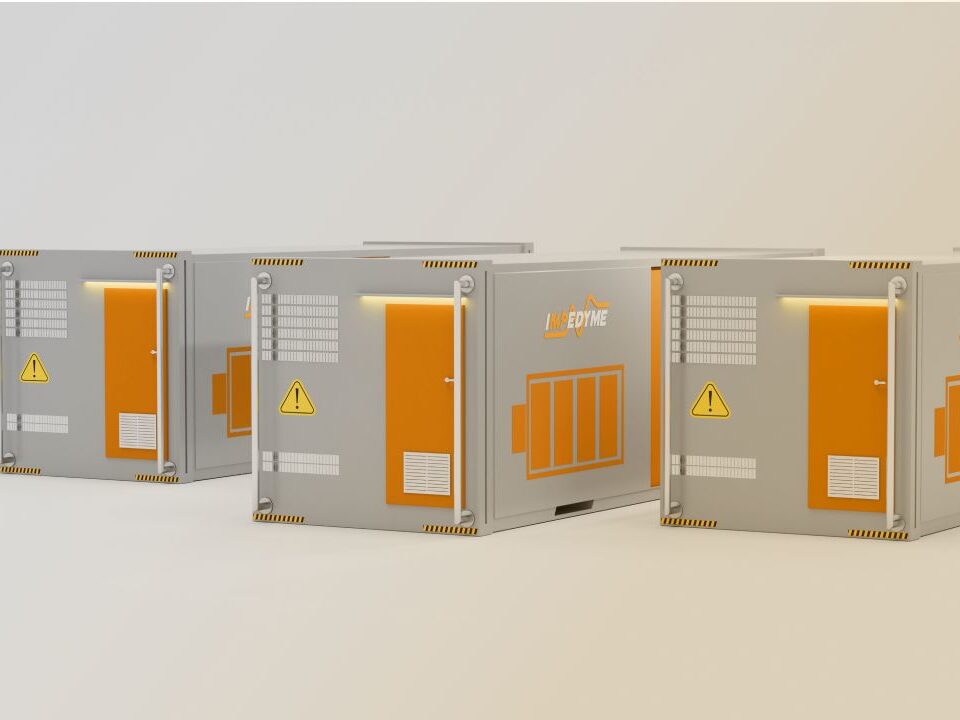
-
 Induction Motor
Induction Motor
-
 Automotive Electrical System Simulation
Automotive Electrical System Simulation
-
 DC/DC Bidirectional Converter
DC/DC Bidirectional Converter
-
 PWM Control for Brushless DC
PWM Control for Brushless DC
-
 BLDC Motor Control and Drive Simulation
BLDC Motor Control and Drive Simulation
-
 Electric Vehicle Fast Charger Simulation
Electric Vehicle Fast Charger Simulation
-
 DFIG Wind Turbine Simulation
DFIG Wind Turbine Simulation
-
 Dual Active Bridge
Dual Active Bridge
-
 EV Dynamometer Test Environment Simulation
EV Dynamometer Test Environment Simulation
-
 Electric Vehicle Simulation
Electric Vehicle Simulation
-
 Three-Phase Grid-Connected Inverter Using Direct-Q…
Three-Phase Grid-Connected Inverter Using Direct-Q…
-
 Three-Phase Grid-Connected Solar Photovoltaic
Three-Phase Grid-Connected Solar Photovoltaic
-
 Grid-Connected Rectifier
Grid-Connected Rectifier
-
 Grid-Tied Inverter System
Grid-Tied Inverter System
-
 Torque Control in a Hybrid Excitation Synchronous …
Torque Control in a Hybrid Excitation Synchronous …
-
 Wye-Delta Starting Circuit
Wye-Delta Starting Circuit
-
 IPMSM-Based Axle-Drive
IPMSM-Based Axle-Drive
-
 Simplified Parallel Hybrid Electric Vehicle
Simplified Parallel Hybrid Electric Vehicle
-
 Simplified Series Hybrid Electric Vehicle
Simplified Series Hybrid Electric Vehicle
-
 Series-Parallel Hybrid Electric Vehicle
Series-Parallel Hybrid Electric Vehicle
-
 Three-Phase Matrix Converter Simulation
Three-Phase Matrix Converter Simulation
-
 Venturini Modulation for Three-Phase Matrix Conver…
Venturini Modulation for Three-Phase Matrix Conver…
-
 Microgrid Frequency Regulation Using Vehicle-to-Gr…
Microgrid Frequency Regulation Using Vehicle-to-Gr…
-
 Three-Phase Modular Multilevel Converter
Three-Phase Modular Multilevel Converter
-
 Field-Oriented Control
Field-Oriented Control
-
 Interior Permanent Magnet Synchronous Generator
Interior Permanent Magnet Synchronous Generator
-
 Permanent Magnet Synchronous Machine
Permanent Magnet Synchronous Machine
-
 PMSM Rotor Angular Velocity
PMSM Rotor Angular Velocity
-
 PMSM-Based Electrical Traction Drive
PMSM-Based Electrical Traction Drive
-
 Maximum Power Point Tracking
Maximum Power Point Tracking
-
 Six-Phase Permanent Magnet Synchronous Machine
Six-Phase Permanent Magnet Synchronous Machine
-
 Synchronous Machine-Based Electrical Drive Simulat…
Synchronous Machine-Based Electrical Drive Simulat…
-
 Single-Stage Solar Inverter
Single-Stage Solar Inverter
-
 Three-Phase Cycloconverter Simulation
Three-Phase Cycloconverter Simulation
-
 Totem-Pole PFC Simulation
Totem-Pole PFC Simulation
-
 Twelve-Pulse Thyristor Rectifier
Twelve-Pulse Thyristor Rectifier
-
 Two-Wheeler On-Board Charger
Two-Wheeler On-Board Charger
-
 Vienna Rectifier Simulation
Vienna Rectifier Simulation
-
 High-Voltage Direct Current
High-Voltage Direct Current
-
 Wireless Power Transfer
Wireless Power Transfer

Comprehensive Documentation for Field-Oriented Control (FOC) of Induction Motor (IM) Simulation
Table of Contents
- 1 Comprehensive Documentation for Field-Oriented Control (FOC) of Induction Motor (IM) Simulation
- 1.1 Introduction
- 1.2 System Overview
- 1.2.1 What is Field-Oriented Control (FOC)?
- 1.2.2 Purpose of the Simulation
- 1.3 Key Features
- 1.3.1 Precise Motor Control via Current and Position Sensing
- 1.3.2 Advanced Current and Voltage Protection Mechanisms
- 1.3.3 Torque and Flux Control Implementation
- 1.3.4 Field Weakening for Extended Speed Range
- 1.3.5 High Dynamic Response
- 1.3.6 Energy Efficiency
- 1.3.7 Flexibility
- 1.4 Simulation Objectives
- 1.5 Technical Description
- 1.5.1 System Configuration
- 1.5.2 Control Methodology
- 1.6 Advantages of FOC-Based IM Control
- 1.7 Applications
- 1.7.1 Industrial Automation
- 1.7.2 Electric Vehicles (EVs)
- 1.7.3 Renewable Energy Systems
- 1.7.4 HVAC Systems
- 1.7.5 Water and Wastewater Treatment
- 1.7.6 Mining and Heavy Industries
- 1.7.7 Oil and Gas Industry
- 1.7.8 Marine and Offshore Applications
- 1.8 Simulation Benefits
- 1.9 Summary
- 1.10 Future Enhancements
- 1.10.1 Induction Motor
- 1.10.2 Automotive Electrical System Simulation
- 1.10.3 DC/DC Bidirectional Converter
- 1.10.4 PWM Control for Brushless DC
Introduction
Induction motors (IMs) are widely used in industrial and commercial applications due to their ruggedness, reliability, and high efficiency. However, achieving precise torque and speed control requires advanced control techniques such as Field-Oriented Control (FOC). This project focuses on modeling, simulating, and implementing an FOC-based drive system for an IM, ensuring optimized performance, enhanced protection, and real-time validation using Hardware-in-the-Loop (HIL) simulation.

System Overview
What is Field-Oriented Control (FOC)?
Field-Oriented Control (FOC) is an advanced motor control strategy that enables independent control of torque and flux, similar to a DC motor. This method ensures:
✔ Accurate speed and torque regulation under various load conditions.
✔ High efficiency across different speed ranges.
✔ Smooth and stable motor operation.
Purpose of the Simulation
The simulation aims to:
✔ Implement an FOC-based drive system for an IM.
✔ Model and test torque and flux control loops for precise motor control.
✔ Optimize PI controller parameters for improved response.
✔ Evaluate the system’s robustness under different operating conditions.
✔ Validate control algorithms using HIL simulation.
Key Features
Precise Motor Control via Current and Position Sensing
✔ Real-time sensing of motor current and rotor position for accurate torque and speed control.
✔ Improves dynamic performance and ensures smooth operation.
➡️ HIL Benefit: Enables precise validation of sensing techniques in real-time.
3.2 Optimized PI Controller for Enhanced Motor Performance
✔ Fine-tuned PI controller parameters for minimized steady-state errors.
✔ Enhances transient response and motor stability under load variations.
➡️ HIL Benefit: Allows real-time controller tuning before hardware implementation.
Advanced Current and Voltage Protection Mechanisms
✔ Overcurrent and overvoltage protection for safe IM operation.
✔ Ensures system reliability by preventing component damage.
➡️ HIL Benefit: Provides real-time testing of protection mechanisms.
Torque and Flux Control Implementation
✔ Decouples torque and flux using d-q axis transformation.
✔ Ensures efficient energy utilization across different operating points.
➡️ HIL Benefit: Simulates real-world load scenarios for optimized control.
Field Weakening for Extended Speed Range
✔ Expands the IM’s operational speed range beyond rated speed.
✔ Maintains efficiency in high-speed applications such as industrial drives and transportation.
➡️ HIL Benefit: Enables real-time tuning of field-weakening strategies.
High Dynamic Response
FOC enables fast and accurate response to load changes, enhancing system stability and reliability.
Energy Efficiency
FOC reduces energy losses, improving overall energy efficiency and reducing operational costs.
Flexibility
FOC can be applied to a wide range of induction motor applications, making it suitable for various industries.
Simulation Objectives
This simulation helps evaluate:
✔ Performance of FOC-based IM drive under varying loads.
✔ Efficiency improvements with optimized PI control tuning.
✔ Robustness of protection mechanisms and response to faults.
➡️ HIL Benefit: Ensures a seamless transition from simulation to hardware testing.
Technical Description
System Configuration
- Input: Three-phase AC supply.
- Motor Drive: Inverter-based IM drive with FOC control.
- Control Algorithm: Field-Oriented Control with PI-based speed and current loops.
- Output: Precision-controlled IM torque and speed.
Control Methodology
- FOC Implementation: d-q axis transformation for independent torque and flux control.
- PI Controller Tuning: Adjusts speed and current control loops for optimal response.
- Protection Features: Real-time monitoring of current and voltage for fault prevention.
- Field Weakening: Extends motor speed range without excessive losses.
➡️ HIL Benefit: Enables real-time validation and tuning of control strategies.
Advantages of FOC-Based IM Control
✔ Improved torque control with smooth transitions.
✔ High efficiency and power density.
✔ Wide speed range operation using field weakening.
✔ Reduced torque ripple for smoother performance.
➡️ HIL Benefit: Provides real-time assessment of control techniques before deployment.
Applications
Industrial Automation
- Variable Frequency Drives (VFDs): FOC is used in VFDs to control the speed and torque of induction motors in industrial machinery, such as conveyor belts, pumps, and compressors. Simulations help optimize performance and energy efficiency.
- Robotics: FOC is used in robotic systems for precise motion control, ensuring accurate positioning and smooth operation.
- CNC Machines: FOC enables precise speed and torque control in computer numerical control (CNC) machines, improving machining accuracy and efficiency.
Electric Vehicles (EVs)
- Traction Motors: FOC is used in EVs to control induction motors for propulsion, providing smooth acceleration, regenerative braking, and efficient power conversion.
- Auxiliary Systems: FOC is used in EV auxiliary systems, such as HVAC compressors and power steering pumps, ensuring efficient and reliable operation.
Renewable Energy Systems
- Wind Turbines: FOC is used in wind energy systems to control induction generators, optimizing power generation and grid integration under varying wind conditions.
- Solar Tracking Systems: FOC enables precise control of induction motors in solar tracking systems, maximizing energy capture from solar panels.
HVAC Systems
- Air Handling Units: FOC is used in HVAC systems to control induction motors in air handling units, improving energy efficiency and comfort.
- Chillers and Cooling Towers: FOC ensures efficient operation of induction motors in chillers and cooling towers, reducing energy consumption and operational costs.
Water and Wastewater Treatment
- Water Pumps: FOC is used in water treatment plants to control induction motors in pumps, ensuring efficient and reliable operation.
- Aeration Blowers: FOC enables precise control of induction motors in aeration blowers, optimizing energy efficiency in wastewater treatment plants.
Mining and Heavy Industries
- Crushers and Grinders: FOC is used in mining equipment to control induction motors in crushers and grinders, reducing mechanical stress and improving efficiency.
- Hoists and Conveyors: FOC ensures smooth and efficient operation of induction motors in hoists and conveyors, enhancing productivity and safety.
Oil and Gas Industry
- Pumping Stations: FOC is used in oil and gas pumping stations to control induction motors, ensuring efficient and reliable operation.
- Compressors: FOC enables precise control of induction motors in compressors, improving energy efficiency and reducing operational costs.
Marine and Offshore Applications
- Shipboard Systems: FOC is used in shipboard systems to control induction motors in pumps, compressors, and propulsion systems, ensuring reliable operation in harsh environments.
- Offshore Platforms: FOC ensures efficient operation of induction motors in offshore oil and gas platforms, reducing energy consumption and improving reliability.
➡️ HIL Benefit: Enables real-time validation of control algorithms for different sectors.
Simulation Benefits
With this simulation, users can:
✔ Analyze FOC performance and PI controller tuning effects.
✔ Optimize motor control strategies for enhanced efficiency.
✔ Evaluate system robustness under different fault conditions.
➡️ HIL Benefit: Ensures a seamless transition from simulation to real-world implementation.
Summary
The FOC-Based IM Drive Simulation provides a comprehensive framework for studying torque control, speed regulation, and protection mechanisms in electric motor applications. Impedyme’s HIL solutions enhance the development process:
| Development Stage | Impedyme’s Contribution |
|---|---|
| Motor Control Design | HIL testing of FOC algorithms in real-time |
| PI Controller Tuning | Optimized control loops with minimal errors |
| Fault Condition Testing | HIL validation of protection mechanisms |
| System Performance Analysis | Real-time assessment under dynamic loads |
Future Enhancements
✔ Integration of AI-based adaptive control for dynamic load conditions.
✔ Development of sensorless FOC techniques using model-based estimation.
✔ Advanced fault detection and predictive maintenance algorithms.
The FOC-Based IM Drive Simulation is a crucial tool for high-performance motor control applications. By leveraging Impedyme’s HIL solutions, engineers can optimize torque control, enhance motor efficiency, and validate protection mechanisms before real-world deployment.






